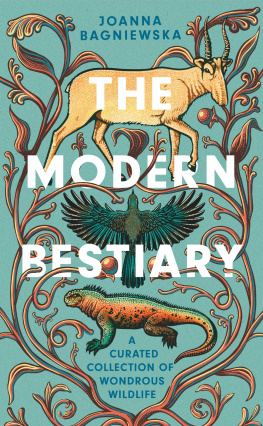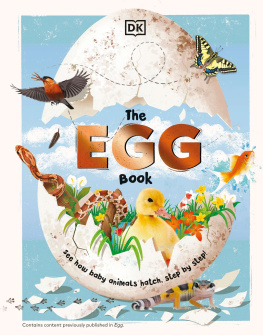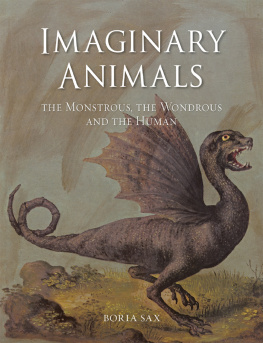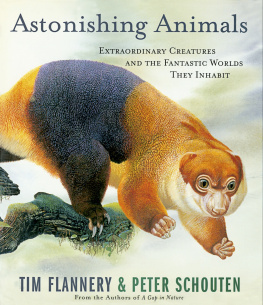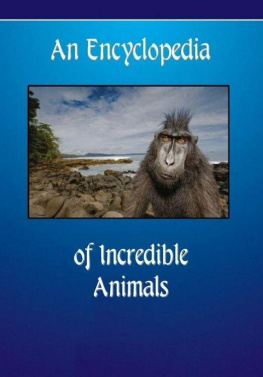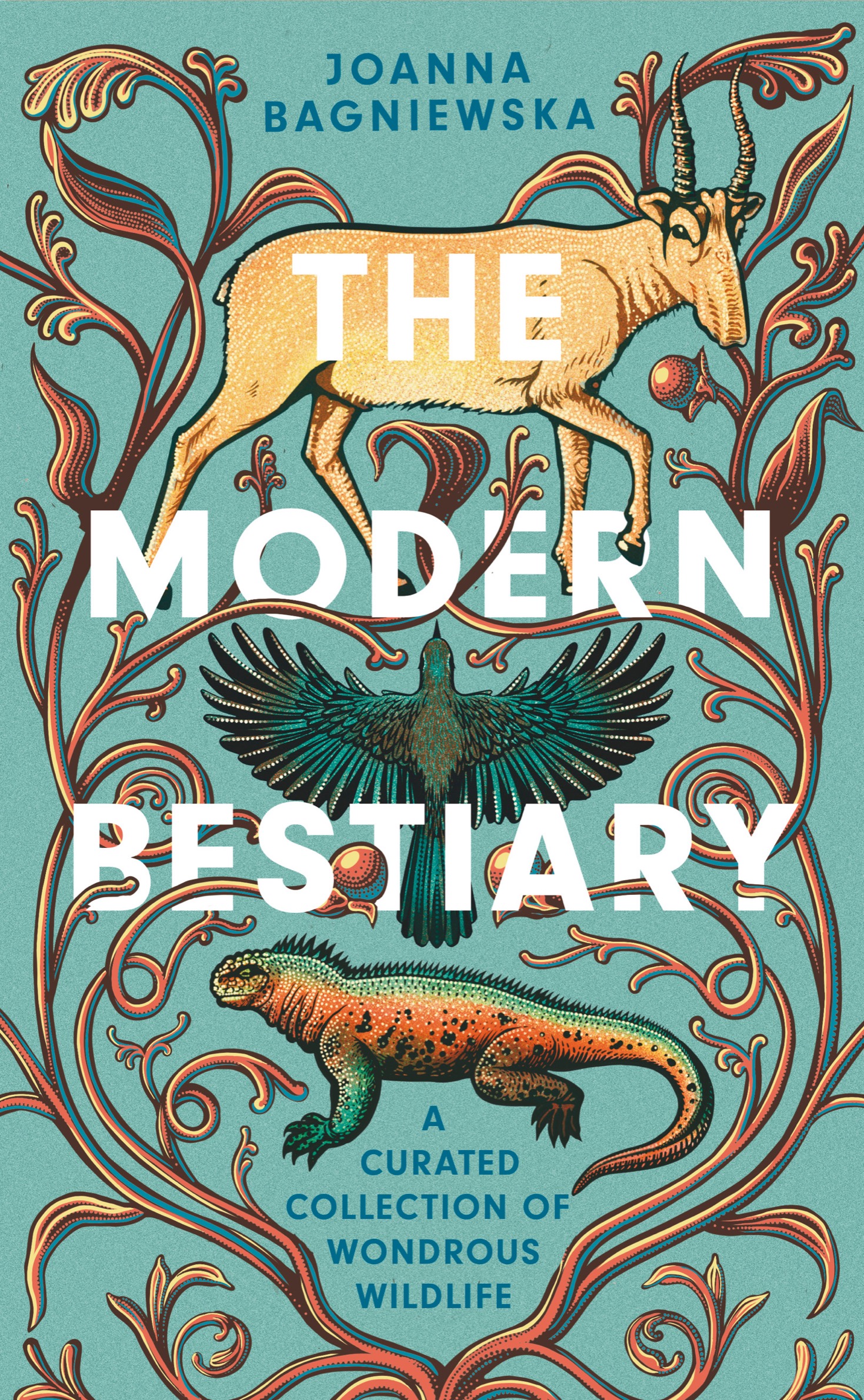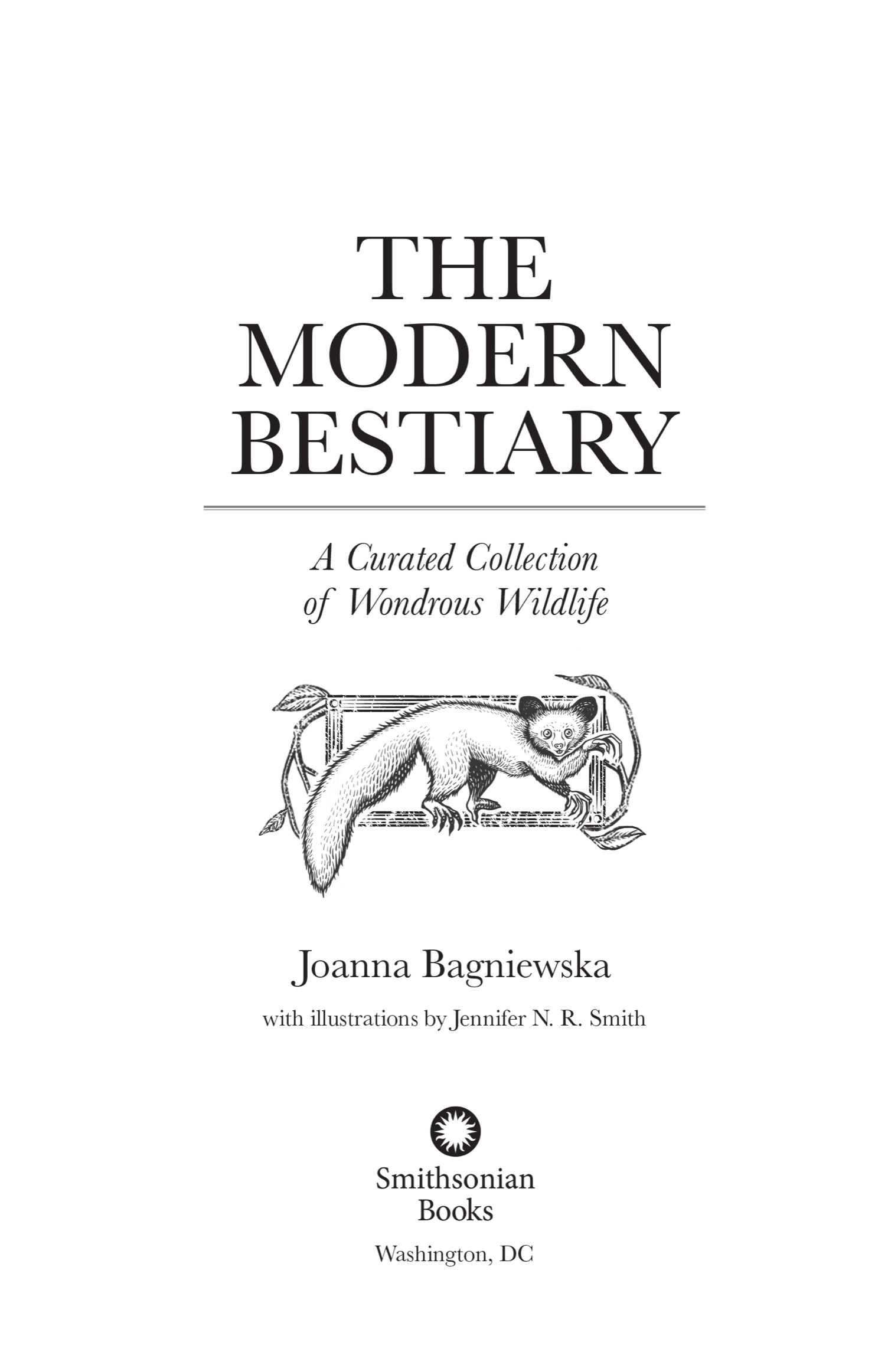PRAISE FOR THE MODERN BESTIARY
Everyone who loves wildlifeespecially fantastically weird and cringingly gross wildlifeshould read this masterful book.
Mark Carwardine, author/presenter of Last Chance to See
Even after half a centuryand countingas a professional zoologist, I encountered new and intriguing facts on every page, all conveyed in an easy, friendly style. If ever there was a book that highlighted the bewildering wonders of the natural world, and the need for their conservation, this is it.
Michael Brooke, author of Far from Land
If you love animals, especially ones with unsavory habits, this book is for you. Entries are crafted with affection, cast-iron scholarship, and an unyielding dedication to exposing as much hilarious weirdness as the animal kingdom can offer. And that, it appears, is rather a lot. This is a book to adore.
Tom Moorhouse, author of Elegy for a River
This modern bestiary is a magnificent miscellany that will amuse and amaze. From butterflies that make crocodiles cry and penis-fencing slugs to fish that live inside sea cucumbers bottomsthe natural world is stranger than you could ever imagine.
George McGavin, entomologist, author, and TV presenter
Just when you thought the natural world couldnt get any more bizarre, you turn the page and learn about a small marsupial that mates itself to death. Theres plenty inside this beautifully written book to make you laugh, squirm, andperhaps most importantlyappreciate how lucky we are to not have to live inside an anus.
Yussef Rafik, zoologist and wildlife TV presenter
Copyright 2022 Joanna Bagniewska
Illustrations copyright 2022 Jennifer N. R. Smith
The right of Joanna Bagniewska to be identified as the Author ofthe Work has been asserted by her in accordance with theCopyright, Designs and Patents Act 1988.
First published in 2022 by
WILDFIRE
an imprint of HEADLINE PUBLISHING GROUP
Apart from any use permitted under UK copyright law, this publication may only be reproduced, stored, or transmitted, in any form, or by any means, with prior permission in writing of the publishers or, in the case of reprographic production, in accordance with the terms of licenses issued by the Copyright Licensing Agency.
Every effort has been made to fulfill requirements with regard to reproducing copyright material. The author and publisher will be glad to rectify any omissions at the earliest opportunity.
Cataloguing in Publication Data is available from the British Library
UK Hardback ISBN 978 14722 8960 5
HEADLINE PUBLISHING GROUP
An Hachette UK Company
Carmelite House
50 Victoria Embankment
London EC4Y 0DZ
www.headline.co.uk
www.hachette.co.uk
Published in United States of America and its territories, Canada and dependencies, and the Philippine Republic by Smithsonian Books
US ISBN9781588347305
Ebook ISBN9781588347435
Library of Congress Cataloging-in-Publication Data
Names: Bagniewska, Joanna, author.
Title: The modern bestiary : a curated collection of wondrous wildlife / Joanna Bagniewska ; with illustrations by Jennifer N.R. Smith.
Description: Washington, DC : Smithsonian Books, 2022. | First published in 2022 by Wildfire, an imprint of Headline Publishing Group-- title page verso. | Includes bibliographical references and index.
Identifiers: LCCN 2022019552 | ISBN 9781588347305 (hardback)
Subjects: LCSH: Animals--Canada--Miscellanea.
Classification: LCC QL45.2 .B34 2022 | DDC 591.971--dc23/eng/20220525
LC record available at https://lccn.loc.gov/202201955
For permission to reproduce illustrations appearing in this book, please correspond directly with the owners of the works. Smithsonian Books does not retain reproduction rights for these images individually, or maintain a file of addresses for sources.
a_prh_6.0_140999374_c0_r0
To the large Aussie mammal, the precocial small primate and the altricial, freshly emerged larva: to my family
Contents
Introduction
Before we start, let me warn you that this is not really a book for childrenso if you bought it for your baby sister, kid nephew, or little cousin (because its about animals and it has pictures), you need to be prepared for a, perhaps awkward, conversation about traumatic insemination, Animals are gross. And gory. And obscene. And I suspect that it could be difficult to address issues such as siblicide with children who are going through the phase of hating their brother or sister.
Now that thats out of the way, welcome! Welcome to The Modern Bestiary!
First of all, what is a bestiaryand why write a modern version of it?
Medieval bestiaries were books of beasts: collections of creatures containing natural history information (factual or otherwise), doused in didactic sauce with a strongly Christian flavor. While animal stories have been popular for centuries, across all cultures, bestiaries of the Christian West were written with a very particular goal in mind. Early Church Fathers, such as the third-century scholar Origen of Alexandria, believed that God speaks to people through creation. If we pay close enough attention to the natural world, he claimed, we will be able to grasp a deeper understanding of the Creatorand of human nature. Animals and their behavior therefore presented a perfect opportunity for a moral and theological lesson. Some of these lessons were plausiblefor example, ants working together for a common good show us how humans should work in unity. Others, however, were completely off. Famously, the pelican was said to kill its young and then pierce its own breast to revive them by feeding them blood; in doing so, the bird symbolized the love and sacrifice of Jesus Christ. Mundane facts (that pelicans feed on fish and not the blood of their parents) did not get in the way of a good allegory. To further blur the line between fact and fiction, the bestiaries contained fantastical beasts, such as unicorns, phoenixes, or mermaids, alongside the real animals.
The first of these moralizing collections of beasts was written sometime between the second and fourth centuries ad , probably in Alexandria. This book, known as the Physiologus, sourced animal stories from Egyptian, Hebrew, and Indian lore, as well as the works of natural philosophers such as Aristotle (De animalibus) and Pliny the Elder (Naturalis Historia), and used them to explain the Christian doctrine. The Physiologus, originally written in Greek, was translated into many European and Middle Eastern languages and became hugely popular across Europe. The original contained fifty-odd chapters describing animals (actual and fantastical), plants and rocks, covering everything from ants to lions to antlions. Over the next centuries, more entries were addedand eventually the Middle Ages saw a real bestiary boom.
The illustrations complementing each entry were an important part of the bestiaries. The stories themselves (with their associated moral lessons) were not new or unknown, having been told and retold in many circumstances; therefore, the purpose of the artwork was predominantly to jog the memory of those who couldnt read. As such, the illustrations were meant to be evocative, expressive, and didactic. Unfortunately, they were not always accurate or even realistic, mainly because the artists did not have much of a chance to see the more exotic species (or none at all when it came to the manticores, griffins, or centaurs). Instead, they based their drawings on previous illustrations, descriptions from earlier books, or other peoples accounts, forming a sort of composite image created via Chinese whispers, with any gaps filled by their own poetic license. Consequently, many animals didnt look quite rightwith lions having very human-like faces, pelicans sporting sharp, eagle-like beaks, whales and dolphins covered in scales, and so on. And the imagery prevailed in other forms: every time I walk through the center of Oxford and peek into Corpus Christi College, I am greeted by a statue of a stubby-beaked, breast-piercing pelican standing atop a sundial in the main quad.

